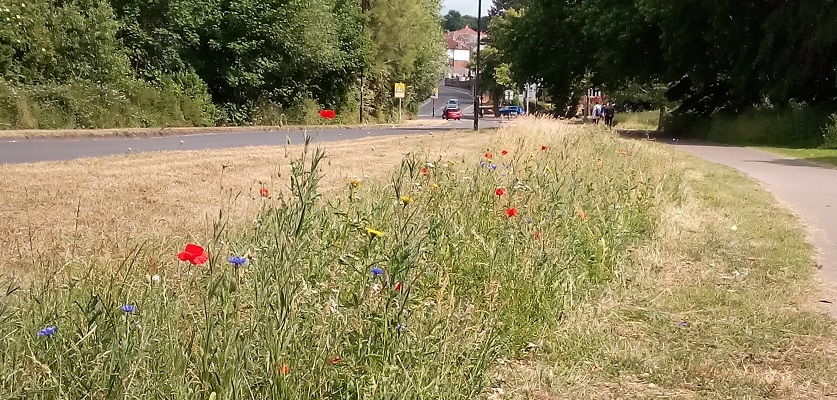Areas managed for wildlife

There are over 70 managed areas across the city, from small community managed beds to established wildflower grasslands. These managed areas embed nature into our daily lives and grassland soil contributes to carbon sequestration (removal) and help reduce the impact of pollutants.
Protecting and enhancing our natural environment is a key theme in our Green City Plan. We are committed to supporting and improving the biodiversity of our city and providing access to nature has been proven to improve the physical and mental wellbeing of residents living in an urban environment.
To find your nearest site check our map of wildflower grasslands.
Watch Councillor Steven Galton, Cabinet Member for Environment talking to our Ecologist Lindsay McCulloch about our wildflower areas.
What is a meadow?
A meadow is an area of grassland made up of perennial plants, species that grow and flower every year, from their underground roots.
Generally meadows are maintained by a late summer cut, sometimes known as a hay cut and often a second cut in September although in rural areas they would probably be grazed by livestock. The cutting of the meadow in managed areas, such as Southampton Common, is based on the lifecycle of flora growing there.
Meadows take many years and careful management to become established.
Managed wildflower and grassland areas
These are areas that were previously managed as amenity grassland or roadside verges that have been closely mown and seeded with a seed mix of wildflowers such as cornflower and poppy. It is important that the plants are allowed to produce and drop their seed before the grass is given a close mowing. The seeds need to make contact with the ground to be able to germinate, so there are flowers again the next year.
Wildflower and grassland areas are especially important in an urban environment as they provide food and shelter for a large variety of insects, birds and small mammals. During the summer months wildflowers bring a pallet of colour and sound to enhance the local character and visual interest.
Supporting wildlife
Areas rich in wildflowers and a with a variety of grasses provide food and shelter for pollinating insects such as butterflies and moths, bees, hoverflies and beetles. Pollination is important as it is how many plants reproduce, including food crops such as apples, pears, strawberries and tomatoes. A healthy population of insects will provide food for other creatures in the food chain such as birds, bats and small mammals.
A mixture of wildflowers and longer grass enable species to connect to other areas of suitable habitat. These wildlife corridors enable migration and breeding opportunities, particularly for non-flying creatures.
Management
Wildflower grasslands need careful management. Cutting at the right time allows the seeds to drop and make contact with the ground and germinate The mowings are removed to prevent the soil becoming too fertile and also allows light to get through to help germinate the seeds.
Left alone the more dominant species such as dock, thistle and nettles will outcompete more delicate species and shrubs such as bramble and eventually trees will take over and shade out almost all of the ground covering plants.
Getting involved
We are keen to help residents identify and create wildflower areas and can work with volunteers to find a suitable site, prepare the area and help with the supply and planting of plug plants.
If you and your neighbours have a proposal or would like some advice, please contact the Engagement and Ecology Team:
Before you fill in this form
You won't be able to save this form to complete later, so please allow yourself at least five minutes to fill in the form.

